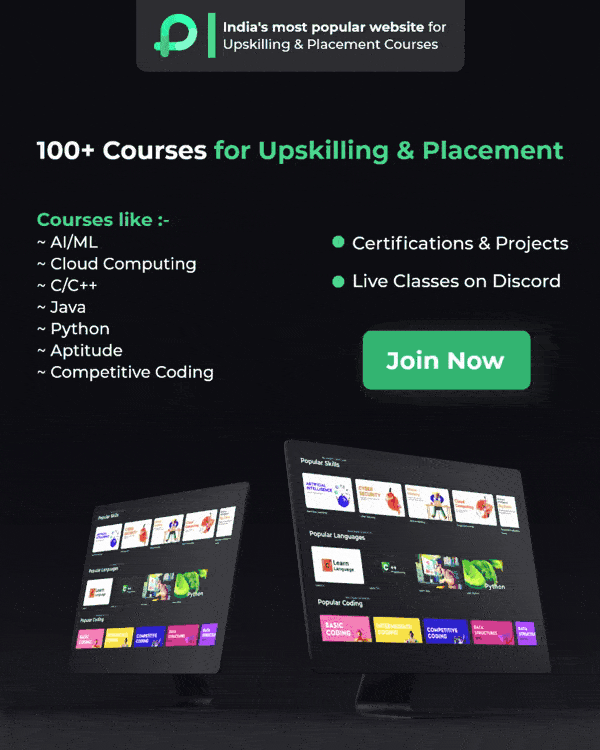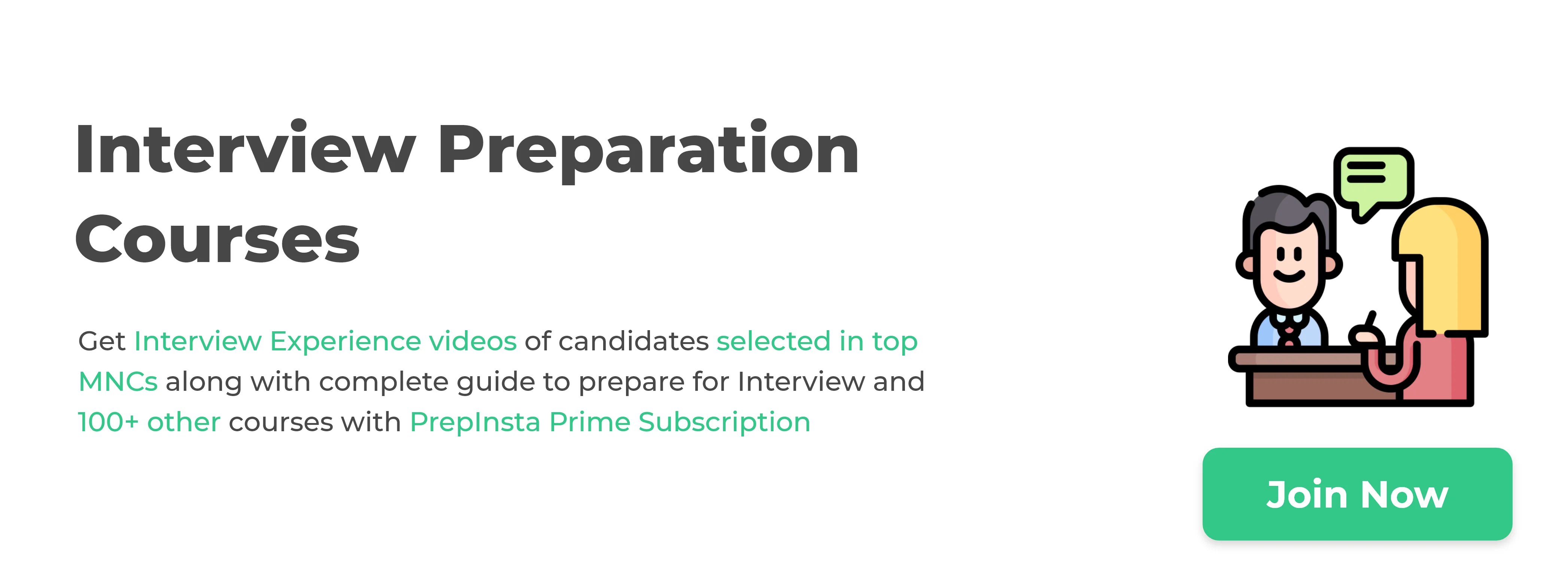LTI Interview Questions for Freshers
LTI Interview Questions for Freshers 2022
Find the most recent LTI Interview Questions for freshers asked in 2022.
Page Highlights:-

LTI Technical Interview Questions for Non-IT Candidates
Question 1:- What is a DataBase Management System (DBMS)?
Answer:
A database management system, or DBMS, is an application system whose primary goal is to manage data. This is a database management system that allows its users to store, define, retrieve, and change data within the database.
Question 2:- What are the different types of errors in C?
Answer:
C errors are classified into two types.
- Compile-time errors
- Run-time errors
Question 3:- What are conditional statements in C?
Answer:
Conditional statements are used to make decisions in the source code. There are various types of conditional statements in C mentioned below:
- If statements
- If else statements
- If else If else statements
- Switch- case statement
- Nested if statement
Question 4:- Mention the 4 basic OOPS concepts.
Answer:
The OOPS concepts are as follows:
- Abstraction
- Encapsulation
- Inheritance
- Polymorphism
Question 5:- What are the properties of normalization in DBMS?
Answer:
Properties of normalization include:
- Data redundancy should be minimized.
- To reduce Insert, Delete, and Update Anomalies.
Question 6:- What are the different types of arguments?
Answer:
There are two types of arguments:
- Call by Value
- Call by Reference
Question 7:- List out the types of networks.
Types | Definition |
|---|---|
MAN | MAN (Metropolitan Area Network) connects and covers the entire city. |
GAN | GAN (Global Area Network) is also known as the Internet, and it uses satellites to connect the world. The Internet is also known as the Network of Wide Area Networks. |
PAN | PAN (Personal Area Network) enables the devices to connect and communicates with a wide range of a person. |
LAN | A LAN (Local Area Network) is a privately owned network that works within and around a single facility, such as a residential, or industrial. |
WAN | WAN (Wide Area Network) typically covers a large geographical area, such as a country or continent. The Internet is the world’s largest WAN. |
Question 8:- Define Java.
Answer:
Java is a popular class-based, object-oriented programming language. It is one of the world’s most popular programming languages.
Question 9:- What is an interpretable language?
Answer:
An interpreted language program executes directly from the source code, with no intermediate compilation step. The statements in an Interpreted language are executed line by line.
Examples of interpretable languages are Python, Javascript, R, PHP, and Ruby.
Question 10:- Define Polymorphism.
Answer:
Polymorphism is defined as assigning behavior or value to something already declared in the main class in a subclass. Polymorphism can take several different forms.
Also Check:-
LTI HR Interview Questions
Question 1:- Tell me about yourself.
Answer:
Good morning/afternoon. I’m ABC, and I recently graduated from XYZ college with a B.Tech in mechanical engineering. I actively participated in numerous college events, including our annual college fest, during my four years of college while maintaining a CGPA of 8.8. I also learned new skills, completed internships, and attended numerous workshops. I’d always wanted to work in an IT company, so I started learning programming skills to help me get a job. This is my dream job, and I hope I can contribute to your organization.
Read more about: Tell me about yourself.
Question 2:- What are your strengths and weaknesses?
Answer:
My critics have told me that my words can be harsh at times. Constructive criticism can help someone improve their skills or performance. So, in recent times, I’ve been attempting to filter my criticism so that it appears encouraging and constructive rather than judgmental or harsh. This practice has greatly aided me in gaining trust, and respect, and establishing stronger professional relationships.
Read more about: What are your strengths and weaknesses?
Question 3:- Will you work under a bond of two years?
Answer:
I’m willing to sign a pledge, but I’m concerned about the intent behind developing those recruitment procedures, the specifics of the bond, and the legal implications. I’d also like to know what kind of projects I’ll be working on during this time, as well as any additional information about the job. Given my long-term objectives, this would assist me in making better decisions.
Read more about: Will you work under a bond of two years?
Question 4:- What do you want to improve in yourself?
Answer:
My most significant flaw or disadvantage is that I am easily sidetracked or diverted from my objectives. I am aware of that in myself, and I have made a concerted effort to plan my day and stay on track.
Read more about: What do you want to improve in yourself?
Question 5:- Are you willing to relocate?
Answer:
Completely! Absolutely! As a recent college graduate, I have nothing holding me back. My ambition is to work for a multinational corporation where I can advance my career over time. And if this means gaining experience, developing hobbies, or gaining promotions, go for it! I enjoy learning about different cultures and communities.
Read more about: Are you willing to relocate?
Also Check:-
LTI Technical Interview Questions for CS/IT Candidates
Question 1:- What do you mean by AVL tree?
Answer:
AVL Tree was developed by GM Adelson – Velsky and EM Landis in 1962. The AVL tree is a self-balancing Binary Search Tree (BST) in which the difference in heights between the left and right subtrees cannot be more significant than one for any node. The difference in heights of the subtrees from the root node of the AVL tree is used to calculate the balance.
Question 2:- What is Belady's Anomaly?
Answer:
Belady’s Anomaly is also known as the FIFO Anomaly. Increasing the number of frames allocated to a process virtual memory usually results in faster execution because fewer page faults occur. In some cases, the execution time increases even when more frames are allocated to the process. This is known as Belady’s Anomaly. This is correct for some page reference patterns.
Question 3:-How is method overloading different from method overriding?
Method Overloading | Method Overriding |
|---|---|
Method overloading is a polymorphism that occurs during the compilation process. | Method overriding is an at-runtime polymorphism. |
It improves the readability of the program | It’s used to provide the method’s specific implementation, which its parent or superclass already provides. |
Method overloading occurs within a single class. | Method overriding occurs in two distinct classes that are linked together via inheritance. |
For method overloading, Inheritance is not required. | For method overriding, inheritance is always required. |
When overloading, methods must have the same name but different signatures. | Overridden methods must have the same name and signature. |
Question 4:- Mention the advantages of checkpoints.
Answer:
Advantages of checkpoints:
- It accelerates the data recovery process.
- Self-checkpoints are performed by the vast majority of DBMS packages.
- Checkpoint records in the log file are used to avoid unnecessary redo operations.
- It has very low overhead and can be done frequently because dirty pages are continuously flushed away in the background.
Question 5:- Write a code to find the prime number of a given range.
Question 6:- What are the various types of operators?
Answer:
Following are the various types of operators:
- Arithmetic operators
- Logical operator
- Relational operator
- Comma operator
- Assignment operator
- Bitwise operator
- Increment and decrement operator
- Other operators
- Size of the operator
- Conditional operator
Question 7:- What is an API in Java?
Answer:
The Java Application Programming Interface (API) is a list of all classes included in the Java Development Kit (JDK).
It contains all Java packages, classes, and interfaces, as well as their methods, fields, and constructors. A programmer can get a lot of functionality out of these pre-written classes.
Question 8:- List the query's drawbacks?
Answer:
The query’s drawbacks are as follows:
- There are no indices.
- Stored procedures are overly compiled.
- Triggers and procedures do not have SET NOCOUNT ON.
- Complicated joins make up inadequately written queries.
- Cursors and temporary tables demonstrate a poor presentation.
Question 9:- Define Deep learning.
Answer:
Deep Learning:
This AI subset is a technique inspired by the way the human brain filters information. It is linked to learning from examples. DL systems assist a computer model in filtering input data through layers in order to predict and classify data. Deep Learning processes data in the same way that the human brain does. It is used in technologies such as self-driving cars.
There are three types of deep learning network architectures:
- Convolutional Neural Networks
- Recurrent Neural Networks
- Recursive Neural Networks

 Apply For Jobs
Apply For Jobs Get Hiring Updates
Get Hiring Updates



